Kwong Tong Cemetery, Kuala Lumpur
2
Kwong Tong Cemetery Kuala Lumpur
by Simone Lee
4 November, 2013
The Kwong Tong Cemetery is the oldest cemetery in Kuala Lumpur, covering 343 acres of land. It is the final resting place of many prominent city pioneers including Yap Ah Loy, the founder of Kuala Lumpur. In 2007, the 112-year-old cemetery – a green lung in the city – was named a Heritage Park.
My great grandparents are buried in Kwong Tong Cemetery and in October this year I visited them for the second time in 20 years. I can barely remember my first visit as a child. The visit was a result of a confluence of events, the catalyst : Bukit Brown. I first visited Bukit Brown in July, a week after the death of my father. In the weeks that followed I joined the Brownies regularly on their guided walks. I was moved by the stories they told of the pioneers buried there and their contributions. On October 5th, after I conducted my first guided walk “Stories of Ladies in the Straits Settlements”, I felt I was ready to trace the path of my roots.
Even as I embarked on the journey , I was helped by a fellow Brownie, Jonathan Siew who introduced me to his friend Boon Hin who knew Kwong Tong Cemetery well. He drove my mother and I around the cemetery. Naturally, our first stop was at my great grandparents’ tomb .
My Great grandparents Graves
Just like many other sinkehs (new comers, fresh from the boat from China) at that time, my great grandfather, 利曉春(1888-1962) and his wife arrived from Meixian, Guangdong in the 1930’s. He was a tailor but soon went into tin mining, a thriving commodity in Kuala Lumpur at that time. He was successful and brought my grandfather over to help him in the tin-mining business. The entire family (3 generations; great grandparents, grandparents’ siblings and their children) lived in a large British colonial villa at Bukit Bintang (which was later torn down to build shopping malls).
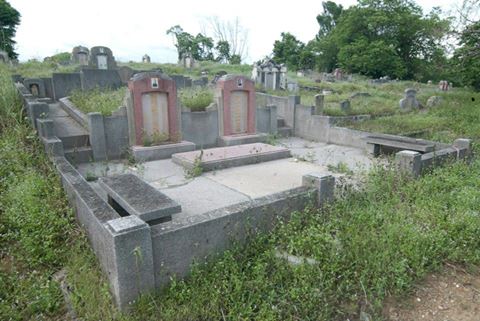
Kwang Tong: The graves of 利曉春(1888-1962) and his wife, Simone’s great grandparents (photo Simone Lee)
Mah Kan Poh
My great grandparent’s neighbour is Mah Kan Poh
The epitaph on the late Mah Kan Poh’s tombstone erected by his descendants.
“Born on the 14th day of the 12th Moon of Thung Chee Yam Shutt Year, or the 1st of February 1863; and Died on the 29th of May, 1938, or the 1st of 5th Moon, Mo Yen Year – at the age of 77 years. The late Mr.Mah Kan Poh was a native of Yong Kow village, Soon Tuck District – in the province of Canton. He was very thrifty and hardworking, and took to silk trading as his first walk of life. At the age of 26 years, he came over to Malaya. He was first interested in tin-mining and then – revenue farms. Later on he took to rubber planting and he could walk for miles daily in his estate and mines. One of his favourite hobbies was hunting. On many occasions, we advised him to give this up, but he turned a deaf ear to our counsel. In summing up, we might say that the deceased was a man of great courage and determination, and that we and our descendants should follow his footsteps as best we could.”
The Nanyang Volunteers Memorial erected in 1947
When the Sino Japanese War erupted on 7 July 1937, the Chinese government’s logistic concern was security of supply routes importing war materials into China. This led to the construction of the Burma Road linking Kunming with Yangon port in British Burma. The Chinese government also realized the lack of skilled drivers and mechanics in China. To solve this problem, they turned to China Relief Fund headed by Mr Tan Kah Kee to recruit drivers and mechanics from all over Nanyang, today’s South East Asia. These drivers and mechanics are known as the Nanyang Volunteers, 南侨机工. From February to September 1939, 3200 Nanyang Volunteers left in 15 batches and most eventually served on the Burma Road. Most of the Nanyang Volunteers were Chinese man but there were also some Malay and Indian men and four Chinese women. Source
The Japanese War Memorial
This site marks a 10,000 square feet mass grave of the casualties during the Japanese occupation. Remains of close to a thousand victims were relocated from the original site, “Tomb of War Victims of the Compatriots of the Republic of China” which was in a dilapidated state.
The Butcher’s Guild Graves
Built in 1931, from the back, it’s a walk through concrete grids towards the front yard.
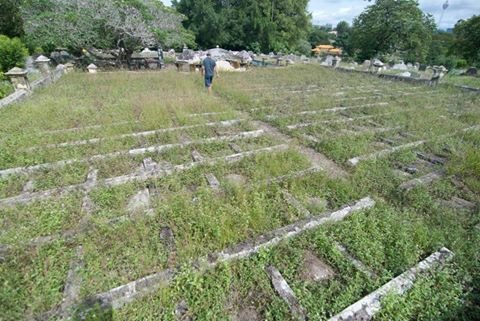
Kwong Tong:concrete grids of the graves of the Butcher’s Guild, view from the back (photo Simone Lee)
The Lim Lian Geok Memorial
Lim Lian Geok (1901-1985) was former Chairman of The United Chinese School Teachers’ Association Of Malaysia (popularly known as Jiao Zong), was a great educationalist as well as a famous social activist.
People from all over the country, put aside their works and came all the way to pay their last respects to him, including high-ranking leaders of political parties. A fund in memory of him was set up, which was later registered as LLG Cultural Development Centre, a non-profit organization. Source
Chua Cheng Tuan : The Cycle & Carriage Family
The Cycle & Carriage family: All except for the 2 tombs at extreme left and right (forefront) are in the Chua family gated plot. You can even see the fence surrounding the cluster behind the trees on the left of photo. At the centre of the plot is Mr.Chua Cheng Tuan, the founder of Cycle & Carriage. His brother Chua Cheng Hock is buried in Bukit Brown.
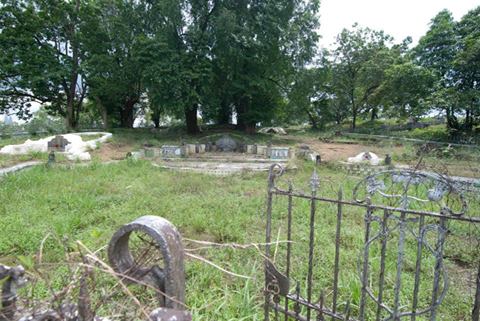
Kwong Tong : centre of the family cluster is plot of Mr.Chua Cheng Tuan, the founder of Cycle & Carriage (photo Simone Lee)
A pavilion was built by Chua Cheng Tuan’s family, in front of the family plot, in his memory. Today many other graves surround the pavilion.
Other interesting tombs at Kwong Tong Cemetery
This collective teochew tomb has a large mound and a tortoise supporting the tomb stone. Engravings of the Confucian story; 24 filial exemplars lines the arms of this large tomb.
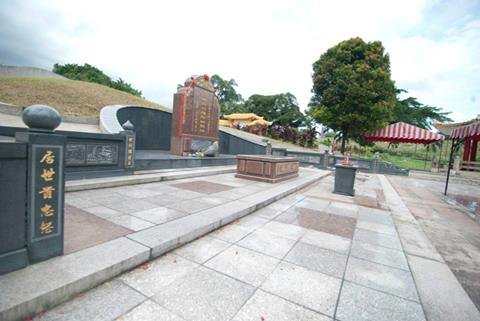
Kwong Tong:panels with stories of the 24 filial piety exemplars on the “arms” on the Teochew tomb (photo Simone Lee)
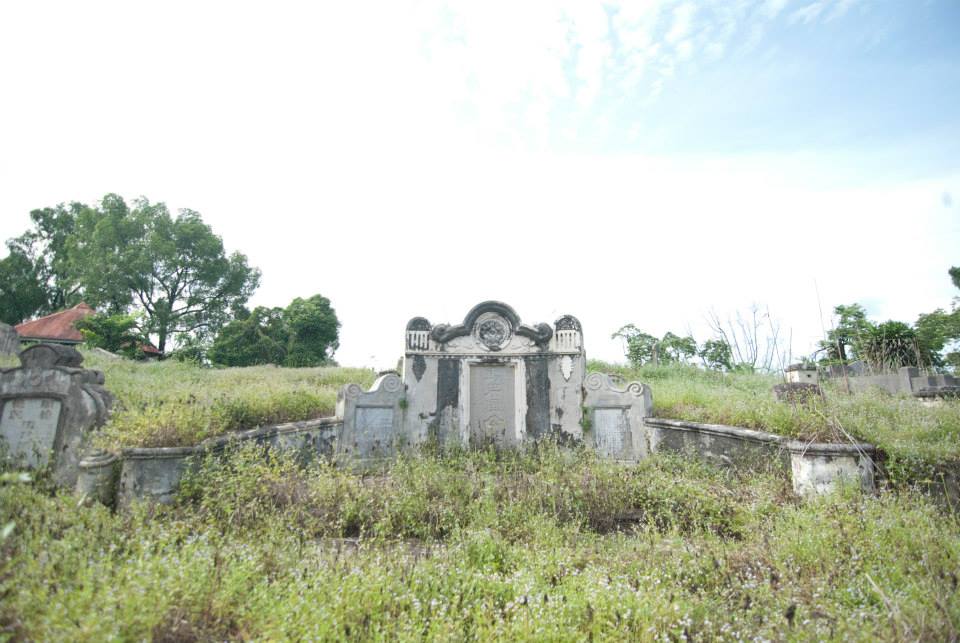

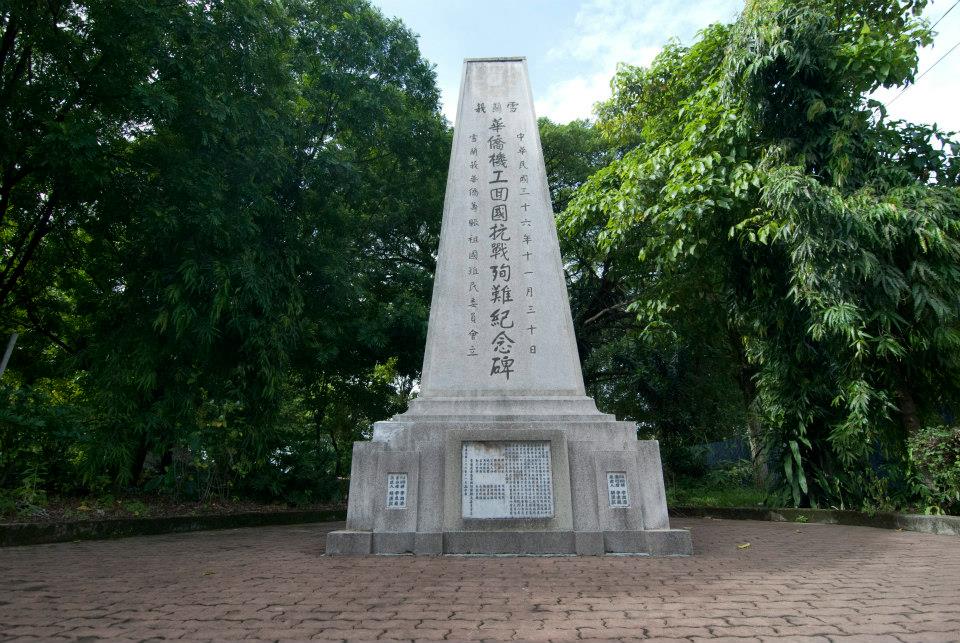
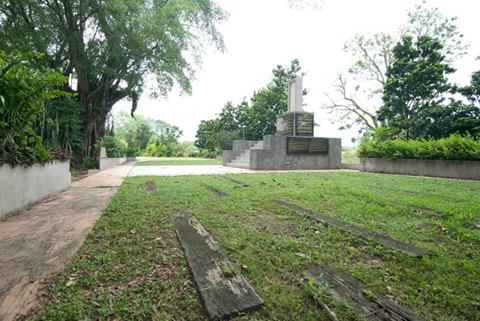
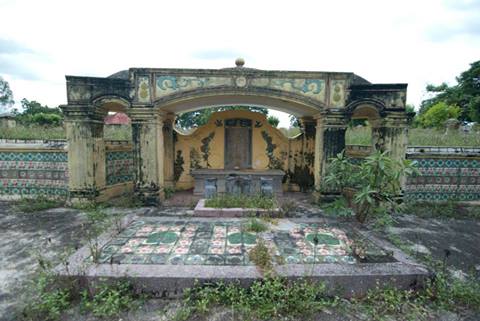
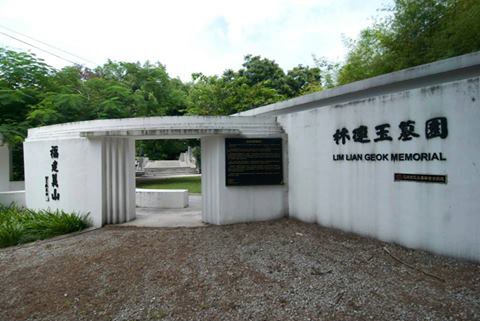
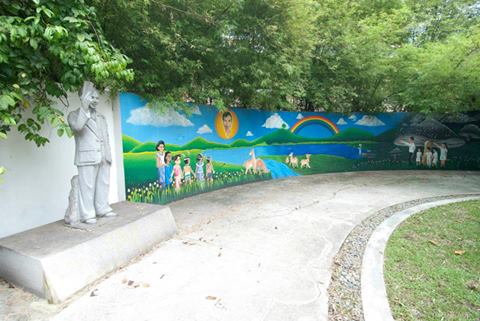
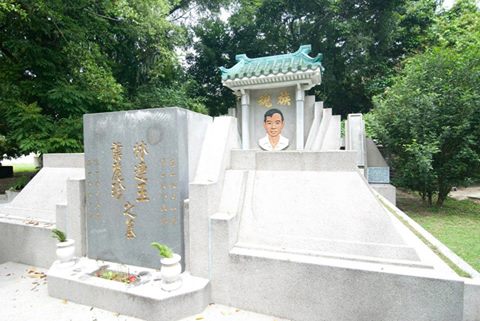
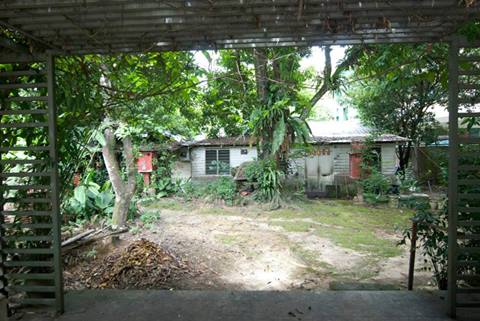
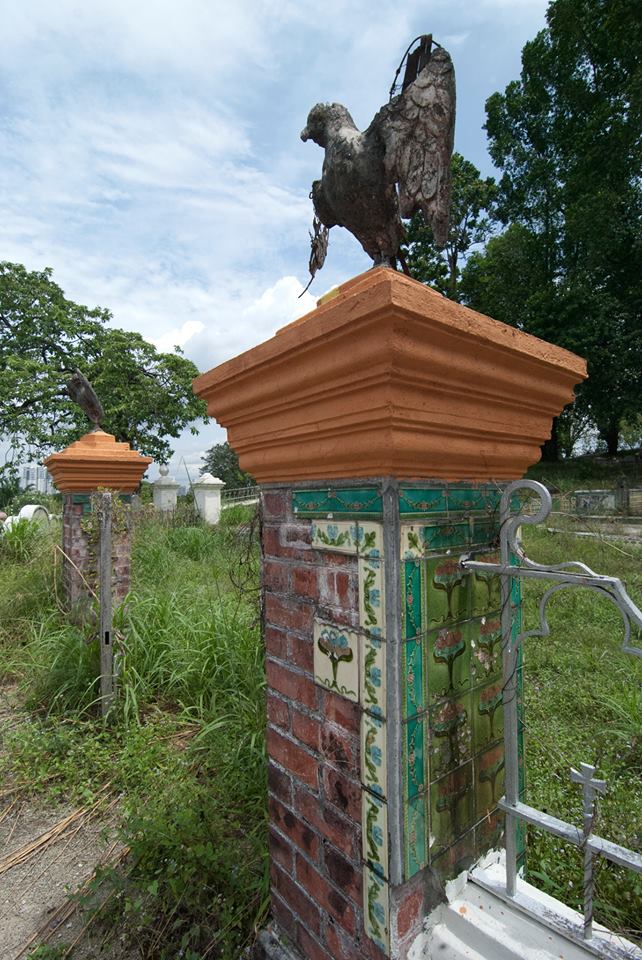

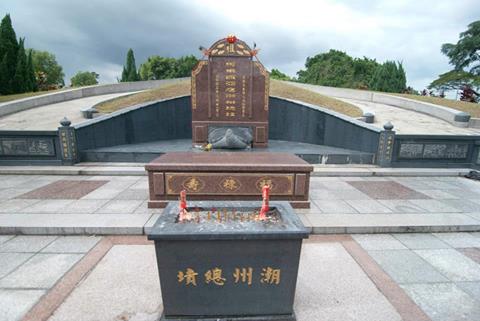
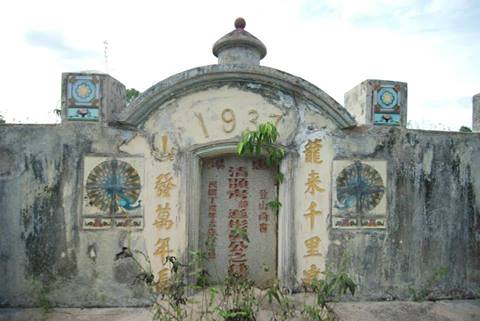

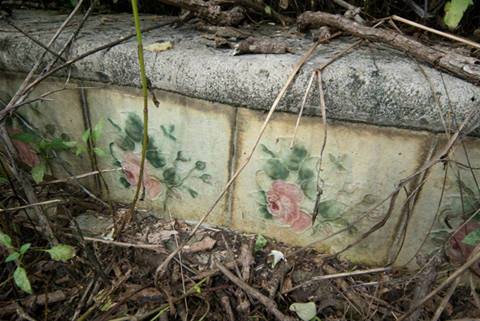

When visiting Bukit Brown last week, I made a mental note to look up a wonderful cemetery I found in KL by chance when entering the back roads to avoid traffic. Happy to have a name now and some go to spots for the next time I am passing through that route. Cheers!
Dear Sir
I read about your write up on The Late Mr Chua Cheng Tuan’s Grave
My Grandfather died in 1917 and he is buried just above The Late Mr Chua
My Grandfather was working for The Late Mr Chua (before known as Hup Huat)
We are now renovating my Grandfather grave in time to celebrate his 100 years anniversary
Other than the details written on the tombstone we have no records or any idea about our Grandfather
He died very young when his 2 sons were only 7-9 years
We would be most grateful if u can advise us on how to trace his records in Malaysia
Many thanks
Kind regards
Mrs Catherine Chua
Granddaughter in law